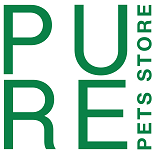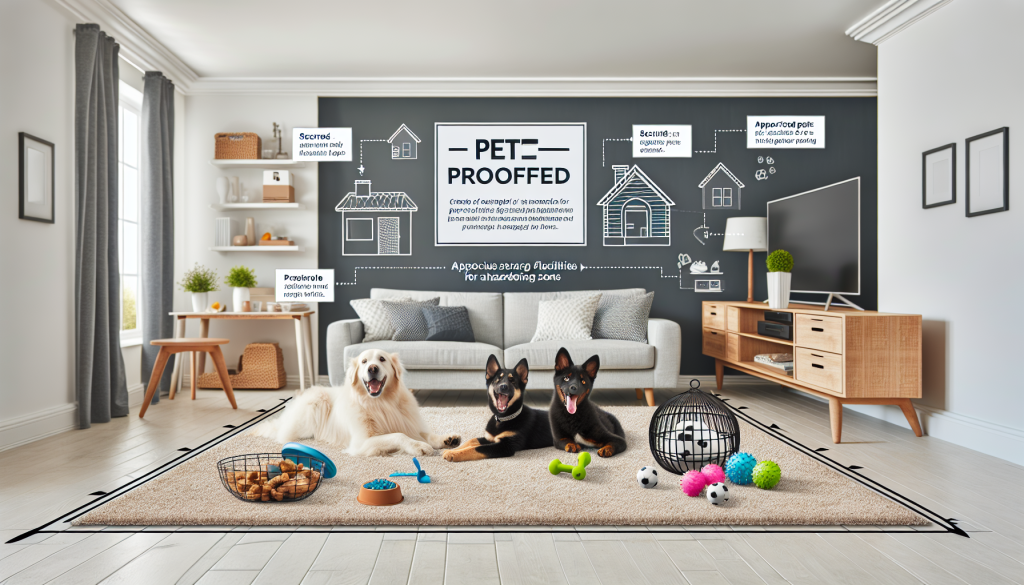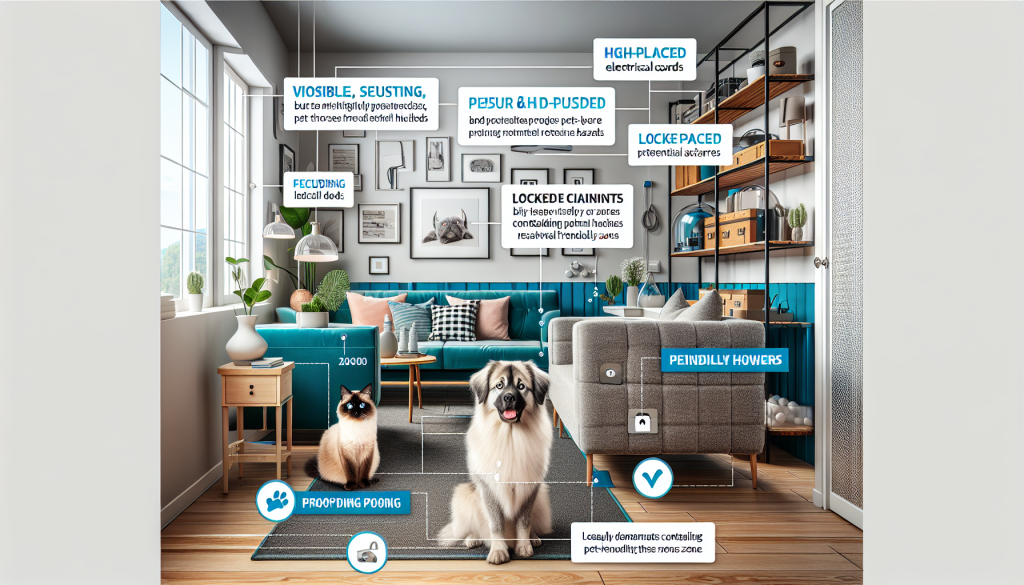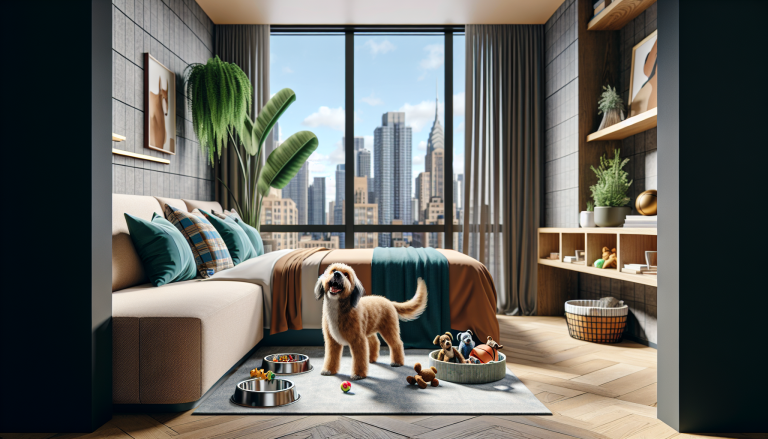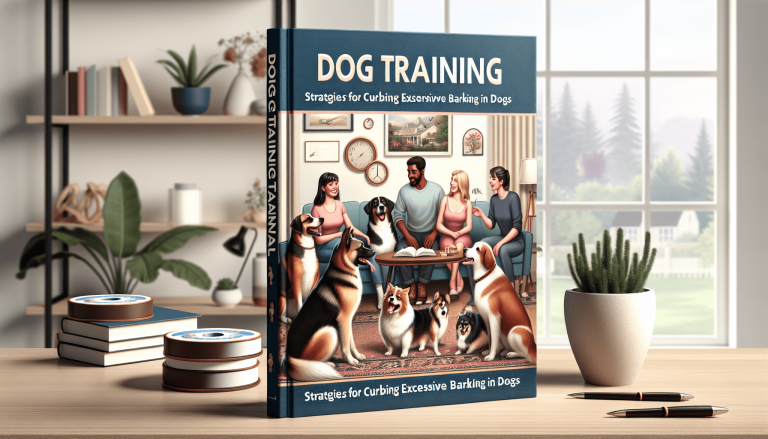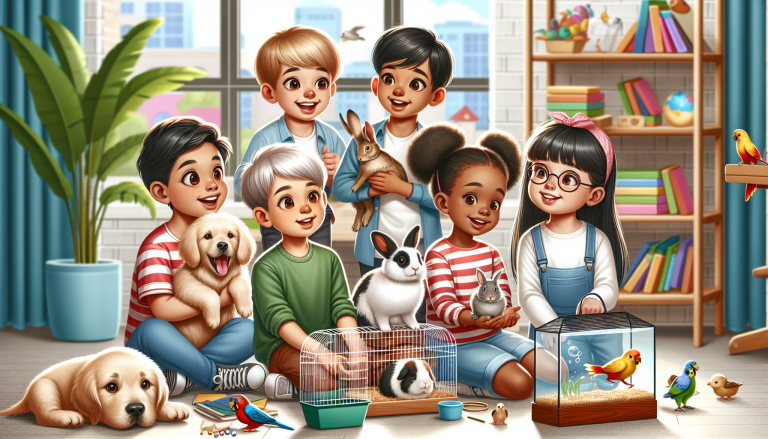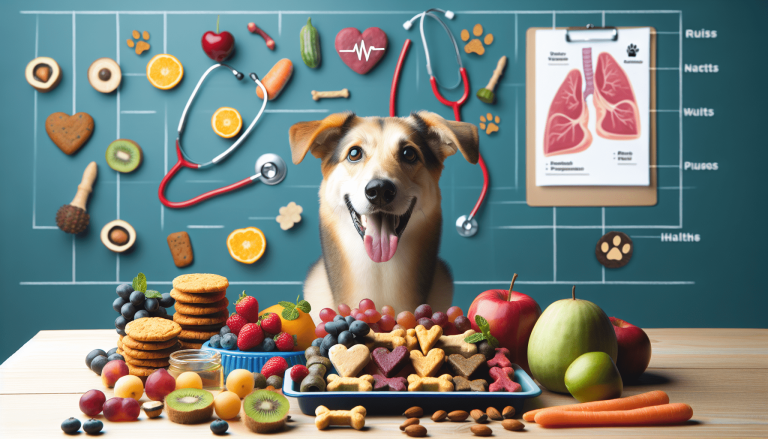Having a pet can bring so much joy and companionship into your life, but it also comes with its fair share of challenges. From curious puppies getting into everything to mischievous cats wreaking havoc, it’s important to create a safe environment for your furry friend. That’s where “The Ultimate Guide to Pet-Proofing Your Home” comes in. In this comprehensive guide, you will discover all the essential tips and tricks to ensure that your home is a secure and pet-friendly space. From securing hazardous objects to preventing accidental escapes, you’ll be equipped with everything you need to create a haven for both you and your beloved pet.
Table of Contents
ToggleCreating a Safe Environment for Your Pet
When bringing a new pet into your home, it’s crucial to create a safe environment that minimizes potential hazards. This means identifying and removing any items that could pose a threat to your furry friend. Take the time to thoroughly examine each room in your house and address any potential dangers.
Identify and Remove Potential Hazards
Start by ensuring that your home is free from any small objects that your pet could swallow and choke on. Look for small toys, jewelry, or loose buttons that could be easily mistaken for a tasty snack. It’s also important to secure any loose items that could be knocked over or cause injury, such as picture frames or vases.
Secure Loose Wires and Cords
Pets, especially puppies and kittens, love to chew on anything they can get their paws on. To prevent any electrical accidents, make sure to secure loose wires and cords out of reach. Use cord organizers or tape them to walls to keep them safely tucked away and prevent your pet from getting tangled or chewing on them.
Keep Toxic Plants Out of Reach
Some plants can be highly toxic to pets when ingested. Before bringing any houseplants into your home, do your research to ensure they are safe for your furry friend. Popular plants such as lilies, azaleas, and ivy can be harmful to pets if eaten. Place any toxic plants out of reach, or better yet, opt for pet-friendly plants such as spider plants or Boston ferns.
Store Chemicals and Cleaning Products Safely
Household chemicals and cleaning products can be extremely dangerous if ingested by pets. Keep all cleaning supplies, detergents, and chemicals locked away in cabinets or on high shelves. When cleaning, always check that your pet is in a separate area to prevent accidental exposure to harmful substances.
Secure Windows and Balconies
Pets are curious creatures and may be tempted to explore open windows or balconies. To avoid potential accidents, make sure all windows have sturdy screens or window guards installed. If you live in an apartment or have a balcony, ensure that it is securely fenced off to prevent any falls or escapes.
Protecting Your Belongings and Furniture
While creating a safe environment for your pet is essential, it’s equally important to protect your belongings and furniture from any damage that your furry friend may cause. Here are some tips to help you pet-proof your home without sacrificing style or comfort.
Invest in Pet-Friendly Furniture
Pets love to snuggle up on couches and beds, but their sharp claws and shedding fur can wreak havoc on your furniture. Consider investing in pet-friendly furniture made of durable materials such as leather or microfiber. These materials are resistant to scratches and easy to clean, making them an excellent choice for pet owners.
Use Durable Fabrics and Materials
When selecting fabrics for curtains, pillows, or rugs, opt for durable materials that can withstand both wear and tear. Avoid fragile materials such as silk or velvet, as they may be easily damaged by your pet’s claws. Look for fabrics with tightly woven fibers that are stain-resistant and easy to clean.
Protect Your Carpets and Rugs
Pets, especially puppies or older dogs, may have accidents indoors, which can leave unsightly stains on your carpets or rugs. To prevent permanent damage, consider using stain-resistant carpet or area rugs that are easy to clean. You can also apply a pet-specific carpet cleaner to treat any accidents promptly.
Secure Your Trash Bins
No matter how well-trained your pet may be, they can’t resist the temptation of a smelly trash bin. Avoid any mess or potential health hazards by securing your trash bins with lids that are pet-proof. Look for bins with locking mechanisms or place them in a designated area that is inaccessible to your furry friend.
Prevent Chewing and Scratching Damage
Just like babies, pets go through a teething phase where they love to chew on everything. To protect your furniture, invest in chew toys and provide plenty of suitable chewing options for your pet. You can also use deterrent sprays that have a bitter taste to discourage your pet from chewing on specific items. Trim your pet’s nails regularly to prevent any scratching damage to your furniture.
Keeping Your Pet Safe in the Kitchen
The kitchen can be a potentially hazardous area for your pet due to hot surfaces, toxic foods, and sharp objects. By taking a few precautions, you can create a safe environment and avoid any accidents or injuries.
Secure Trash Cans and Food Containers
Trash cans and food containers can be a treasure trove for a curious pet. To prevent your furry friend from rummaging through garbage or accessing potentially harmful foods, use a trash can with a secure lid or place it in a cabinet that your pet cannot open. Store all food containers, including pet food, in a pet-proof area or pantry.
Keep Countertops Clear
Pets are natural climbers and may attempt to explore countertops in search of tasty treats or interesting smells. To prevent any accidents or spills, keep countertops clear of food and items that could be knocked over. If your pet is persistent, you can use a pet gate or training techniques to discourage them from jumping onto countertops.
Store Food Safely
Certain human foods can be toxic to pets, such as chocolate, grapes, onions, and avocados. Make sure to store all food items securely in cabinets or areas that are inaccessible to your pet. Avoid leaving any food unattended, as your furry friend may help themselves to a potentially dangerous snack.
Avoid Potential Hot Surfaces
Stovetops, ovens, and other hot surfaces in the kitchen can pose a burn risk to your pet. When cooking, ensure that your pet is kept out of the kitchen or in a designated safe area. Use stove knob covers to prevent your pet from accidentally turning on burners or use childproof locks to secure oven doors.
Protect Your Pet from Sharp Objects
Knives, forks, and other sharp objects should be stored safely out of reach of your curious pet. Avoid leaving any sharp objects on countertops or within easy access. Store them in drawers or cabinets with childproof locks to prevent any accidents or injuries.
Creating a Pet-Friendly Yard
Pets need access to a safe and secure outdoor space where they can run, play, and explore. By making a few adjustments to your yard, you can create an environment that ensures your pet’s safety and enjoyment.
Build or Repair Fences
A secure fence is essential in creating a pet-friendly yard. Ensure that your existing fence is in good condition, with no loose boards or gaps that your pet can squeeze through. If you don’t have a fence, consider installing one to provide a designated area for your pet to enjoy the outdoors safely.
Provide Shade and Shelter
Just like humans, pets need shelter from the elements. Whether it’s a doghouse, a covered patio, or a shaded tree, make sure your pet has a place to seek refuge from the sun, rain, or extreme temperatures. Offer plenty of fresh water and provide portable shade options for hotter days.
Remove Toxic Plants and Chemicals
Before allowing your pet to roam freely in the yard, remove any toxic plants that may pose a threat. Common toxic plants include lilies, oleander, and sago palm. In addition, be cautious with fertilizers, pesticides, and other chemicals used in your yard. Store them safely in locked containers or, ideally, use pet-friendly alternatives.
Secure Your Pool or Water Features
Pools, ponds, and other water features can be dangerous for pets, especially those who are not strong swimmers. Ensure that your pool is securely fenced off and consider installing a pool cover when it’s not in use. If you have a pond or any other open water feature, provide a barrier or fencing to prevent your pet from accidentally falling in.
Avoid Exposing Your Pet to Pesticides
Pesticides and insecticides used in yards can be harmful to pets if ingested or absorbed through their paws. Opt for pet-friendly pest control methods or consult with a professional to find safe alternatives. If you do use chemicals, make sure to keep your pet away from treated areas until they are dry and consider using warning signs to indicate where your pet should not go.
Preventing Accidental Escapes
It’s every pet owner’s worst nightmare: your beloved furry friend slipping through an open door or escaping through a gap in the fence. By taking some preventive measures, you can significantly reduce the risk of accidental escapes and ensure your pet’s safety.
Install Secure Pet Gates
Indoor pet gates are an excellent way to restrict your pet’s access to certain areas of the house. Use gates to prevent your pet from venturing up or downstairs, or to keep them out of rooms where there may be hazards. Look for sturdy gates that your pet cannot knock down or jump over.
Check Windows and Doors for Gaps
Pets are masters at finding the smallest openings to squeeze through. Regularly inspect your windows and doors for any gaps or cracks that your pet could exploit. Install weather stripping or draft blockers to ensure a tight seal and prevent any accidental escapes.
Microchip Your Pet
Microchipping your pet is an essential step in ensuring their safe return in case they do manage to escape. A microchip, about the size of a grain of rice, is implanted under your pet’s skin and contains your contact information. If your pet is found, a veterinarian or shelter can scan the microchip and contact you to reunite you with your furry friend.
Keep Identification Tags Updated
In addition to microchipping, make sure your pet wears a collar with an ID tag that includes your current contact information. Regularly check that the information is accurate and update it if necessary. This way, if your pet does manage to escape, anyone who finds them can easily identify and contact you.
Establish Boundaries and Training
Consistent training is crucial in preventing accidental escapes. Teach your pet basic commands such as “sit,” “stay,” and most importantly, “come.” Practice recall regularly and provide positive reinforcement when your pet obeys commands. Establish clear boundaries and reinforce them through positive reinforcement training to prevent wandering or going near unsafe areas.
Maintaining a Clean and Pet-Safe Home
Having a clean home is not only vital for your own health and well-being but also for the safety of your pet. Regular cleaning and maintenance routines can help prevent any potential hazards or health risks for your furry friend.
Establish Regular Grooming Habits
Regular grooming is essential for your pet’s health and hygiene. Incorporate a grooming routine into your schedule to keep your pet’s coat clean and free from tangles or matting. Brush their teeth regularly to prevent dental issues and check their ears for any signs of infection. If your pet requires it, schedule regular appointments with a professional groomer.
Use Pet-Friendly Cleaning Products
When cleaning your home, choose pet-friendly cleaning products that are free of toxic chemicals. Regular household cleaners may contain ingredients that are harmful to pets if ingested or inhaled. Look for cleaning products specifically designed for use around pets or consider using natural alternatives such as vinegar or baking soda.
Keep Litter Boxes Clean
For cat owners, it’s essential to keep the litter boxes clean to prevent any potential health issues. Scoop the litter boxes daily and change the litter regularly to maintain cleanliness and prevent unpleasant odors. Provide enough litter boxes for multiple cats in the household, following the general rule of one litter box per cat plus one extra.
Vacuum and Dust Regularly
Pets, especially those with fur or hair, can contribute to increased dust and dander in your home. Regular vacuuming and dusting can help reduce allergens and keep your home clean and fresh. Use a vacuum cleaner with a high-efficiency particulate air (HEPA) filter to effectively remove pet hair and dander from carpets and furniture.
Prevent Fleas and Ticks
Fleas and ticks not only cause discomfort for your pet but can also transmit diseases. Keep your pet protected by regularly using flea and tick prevention products recommended by your veterinarian. Vacuum your home frequently, paying close attention to areas where your pet spends most of their time, as this can help eliminate any fleas or ticks that may have hitched a ride inside.
Creating a Safe Sleeping Environment
Providing a safe and comfortable sleeping environment is crucial for your pet’s well-being. By taking a few precautions, you can ensure that your furry friend has a peaceful and restful sleep.
Choose the Right Bedding
Select a pet bed that is appropriate for your pet’s size and breed. Make sure the bed is made of hypoallergenic materials and is easily washable to maintain cleanliness and prevent any allergic reactions. If your pet prefers to sleep in a crate, choose a crate bed or mat that provides comfort and insulation.
Keep Electrical Wires Out of Reach
Electrical wires can be a tempting plaything for pets, but they pose a significant risk of electrocution or injury. Secure any loose wires or cords and keep them out of your pet’s reach. Use cord covers, hide wires behind furniture, or keep them neatly organized to prevent any accidents.
Remove Small and Choking Hazards
Pet-proofing your pet’s sleeping area is essential to prevent any potential choking hazards. Ensure that the sleeping area is free from small objects such as buttons, batteries, or small toys that your pet could swallow. Regularly inspect the area and remove any potential hazards.
Avoid Sharing Your Bed
While it may be tempting to cuddle up with your furry friend in bed, it’s essential to establish boundaries and a separate sleeping space for your pet. Sharing a bed can potentially disrupt your sleep and may lead to dependency or behavior issues. Provide your pet with their own cozy sleeping area to ensure their comfort and give both of you a good night’s rest.
Provide Comfort and Security
Just like humans, pets benefit from a comfortable and secure sleeping environment. Provide soft bedding to cushion your pet’s joints and make sure the sleeping area is warm and draft-free. Consider using a pet-specific blanket or a heat pad designed for pets during colder months.
Ensuring Your Pet’s Health and Well-Being
Taking care of your pet’s overall health and well-being is essential to ensure a long and happy life. By prioritizing their health, you can prevent illnesses, identify any potential issues early on, and provide the necessary care they need.
Schedule Regular Vet Check-Ups
Routine vet check-ups are crucial in maintaining your pet’s health. Regular exams allow the vet to monitor your pet’s weight, assess any changes in behavior or condition, and detect any underlying health issues. Follow your veterinarian’s recommendations for vaccinations, preventive treatments, and check-up schedules.
Keep Vaccinations Up to Date
Vaccinations are vital in preventing various diseases in your pet. Make sure to keep your pet’s vaccinations up to date as recommended by your veterinarian. Vaccines protect against common illnesses such as rabies, distemper, parvo, and more.
Monitor Their Diet and Weight
Maintaining a healthy weight is essential for your pet’s overall wellness. Monitor their diet and ensure they are receiving the appropriate amount of food for their age, size, and breed. Avoid overfeeding and provide a balanced diet that meets their nutritional needs. If you have any concerns about your pet’s weight or diet, consult with your veterinarian.
Provide Adequate Exercise
Regular exercise is important for your pet’s physical and mental well-being. Provide opportunities for your pet to engage in physical activity, such as daily walks, playtime, or interactive toys. The amount of exercise required will vary depending on your pet’s breed and age, so consult with your veterinarian for guidance.
Prevent Accidental Poisoning
Pets are curious creatures and may try to explore their surroundings by sniffing, licking, or even eating potentially toxic substances. Store medications, household chemicals, and poisonous plants in secure locations that are out of your pet’s reach. Be aware of any potential hazards in your home or yard and take steps to prevent accidental poisoning.
Preparing for Emergency Situations
Emergencies can happen at any time, and being prepared is crucial for your pet’s safety. By having a plan in place and essential supplies readily available, you can ensure a prompt response and potentially save your pet’s life.
Compile a Pet First Aid Kit
Put together a pet first aid kit that includes essential items such as bandages, antiseptic wipes, gauze pads, and a pet-specific first aid book. Familiarize yourself with basic first aid procedures for pets and keep the kit easily accessible in case of emergencies.
Identify an Emergency Vet Clinic
Research and identify an emergency vet clinic in your area that operates outside of regular office hours. Save their contact information and know the quickest route to reach them in case of an emergency. It’s also a good idea to have a backup clinic or veterinarian’s contact information in case your primary choice is unavailable.
Know the Poison Control Helpline
In case of accidental poisoning or exposure to toxic substances, it’s important to have the poison control helpline readily available. Save the helpline number in your phone or keep it in an easily accessible location. The poison control helpline will provide guidance on immediate steps to take when dealing with a pet poisoning emergency.
Have an Evacuation Plan
Natural disasters or other emergencies may require you to evacuate your home. Have a plan in place that includes your pet’s safety. Identify pet-friendly evacuation shelters or hotels in your area and establish a designated meeting place for your family and pets. Keep a pet carrier or leash and collar readily accessible for easy transportation.
Consider Pet Insurance
Pet insurance can provide financial peace of mind in case of unexpected accidents or illnesses. Research different pet insurance options and choose a plan that fits your budget and covers your pet’s specific needs. Having pet insurance can help alleviate the financial burden of unexpected veterinary bills.
Training and Socializing Your Pet
Training and socializing your pet are essential components of responsible pet ownership. By providing proper training and socialization, you can help your pet become well-behaved, confident, and happy.
Enroll in Obedience Training Classes
Obedience training classes provide a great opportunity to teach your pet basic commands and good manners. It’s never too early or too late to start training. Look for reputable obedience training classes in your area or consider hiring a professional dog trainer to help you and your pet develop a strong bond based on trust and respect.
Teach Basic Commands and Recall
For your pet’s safety, it’s important that they understand basic commands such as “sit,” “stay,” and “come.” Teaching these commands and practicing recall regularly will help keep your pet out of potentially dangerous situations. Use positive reinforcement techniques such as treats, praise, and rewards to motivate your pet during training sessions.
Introduce Your Pet to Different Environments
Exposing your pet to various environments is crucial for their socialization and confidence-building. Take your pet on outings to parks, dog-friendly cafes, and other public places where they can experience different sights, sounds, and smells. Slowly introduce them to new environments and situations, gradually increasing the level of exposure as they become more comfortable.
Socialize with Other Pets and People
Socialization is key to helping your pet become well-adjusted and friendly towards both other animals and people. Allow them to interact with other dogs and pets in controlled and supervised environments. Encourage positive interactions with people of all ages, including children, to build their confidence and teach them appropriate behavior.
Address Behavioral Issues
Addressing any behavioral issues early on is important for your pet’s well-being and the harmony of your household. If your pet displays signs of aggression, anxiety, or other problematic behaviors, seek guidance from a professional dog behaviorist or trainer. They can provide valuable insights and effective strategies to address and improve your pet’s behavior.
By following these guidelines and taking the necessary precautions, you can create a safe and pet-friendly environment for your furry friend. Remember, your pet’s safety and well-being should always be a priority, and with a little effort, you can ensure that your home is a haven for your beloved pet.
